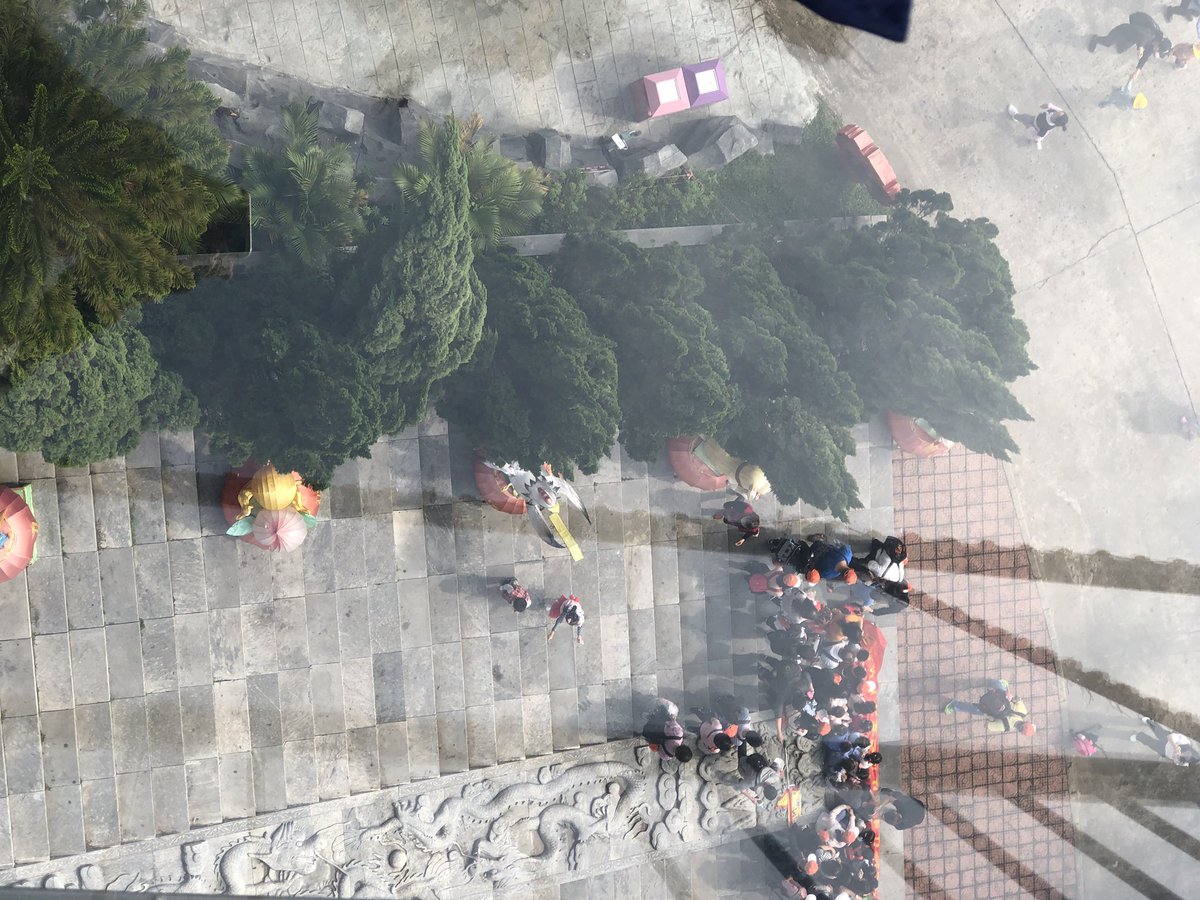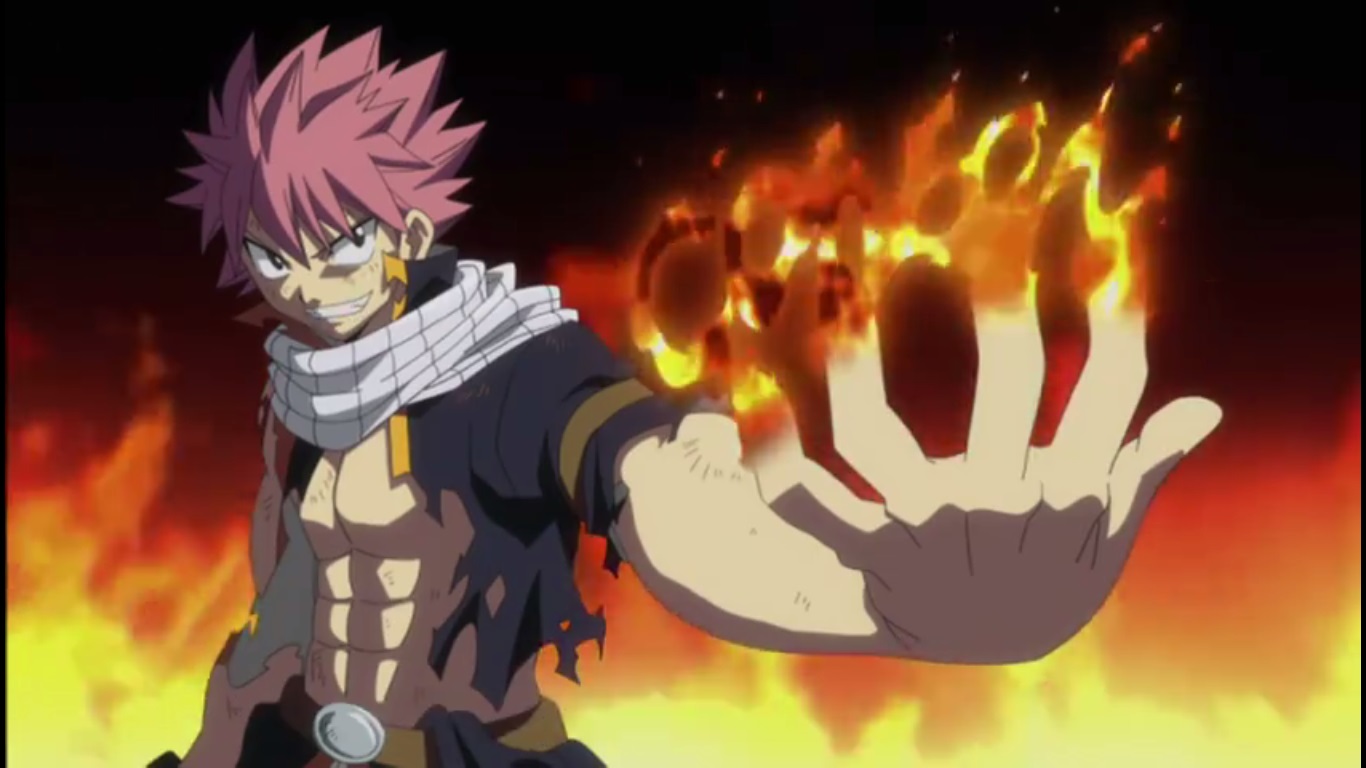


He now wears his wristband on his right wrist.

Natsu continues wearing Igneel's scarf and retains the same lower clothing. The sleeve covers Natsu's left arm with a faux leather brown armband, leaving his Fairy Tail mark, as well as his entire right arm, consequently exposed. He now wears an open-collared, one-sleeved long overcoat version of his original waistcoat, which is instead tucked in and zipped. In the year X791, Natsu's attire receives minor changes.

He has also been known to wear a rolled up comforter strapped across his back, though he rarely carries it in battle. Natsu's main outfit consists of a sleeveless, gold trimmed, black waistcoat, often left open and untucked, exposing his bare chest, a gold trimmed, black cloth around his waist that reaches his knees, held by a leather brown belt with an oval-shaped silver buckle, white knee-length trousers with black ribbon ties, a thick black wristband on his left wrist, black open-toed sandals and the scale-patterned scarf he received from his adoptive father, Igneel. Natsu's guild mark is red and is located just below his right shoulder. He later attains a new scar, this one being a jagged blemish on his right cheek, which he gained following his battle with Zeref. Following his intense battle with the Rogue Cheney of the future, Natsu gains a cross-shaped scar on the left side of his abdomen, a result of the two fatal wounds the man dealt to him during their altercations.
Notsu power skin#
We argue that the physical origin of the extremely high occurrence rate of superflares in these stars may be attributed to the existence of extremely large starspots.Natsu is a lean, muscular young man of average height with a slightly tan skin tone, black eyes, spiky pink-colored hair, and has abnormal sharp canines Natsu has a scar on the right side of his neck, hidden by his scarf. There is evidence that these superflare stars have extremely large starspots with a size about 10 times larger than that of the largest sunspot. In the case of Sun-like stars, the most active stars show a frequency of one superflare (with 10 34 erg) in 100 days. We also studied long-term (500 days) stellar brightness variation of these superflare stars and found that in some G-type dwarfs the occurrence rate of superflares was extremely high, ~57 superflares in 500 days (i.e., once in 10 days). In the case of the Sun-like stars (with surface temperature 5600-6000 K and slowly rotating with a period longer than 10 days), the occurrence rate of superflares with an energy of 10 34-10 35 erg is once in 800-5000 yr. It is interesting that this distribution is roughly similar to that for solar flares. Using these new data, we studied the statistical properties of the occurrence rate of superflares, and confirmed the previous results, i.e., the occurrence rate (dN/dE) of superflares versus flare energy (E) shows a power-law distribution with dN/dEvpropE -α, where α ~ 2. As a result, we found 1547 superflares on 279 G-type dwarfs, which is much more than the previous 365 superflares on 148 stars. By extending our previous study by Maehara et al., we searched for superflares on G-type dwarfs (solar-type stars) using Kepler data for a longer period (500 days) than that (120 days) in our previous study.


 0 kommentar(er)
0 kommentar(er)
